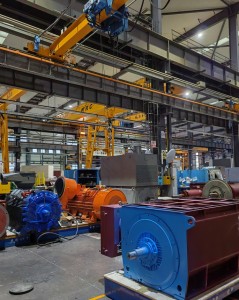Starting performance is a key feature of any motor product that cannot be ignored. Different operating conditions have different requirements for motor starting performance, so motors with specific characteristics are needed. However, direct starting of squirrel cage rotor power frequency motors may cause several major problems.
1. Infrastructure damage:
One of the main issues with direct-on-line starting is the intense torsional vibration forces generated during the starting phase. The motor’s cast iron base is designed to provide stability, but it may not be able to withstand such strong vibrations. As a result, cracks may develop in the base, compromising the integrity of the motor and potentially leading to expensive repairs or replacements. This structural damage affects not only the motor itself, but also the entire system it is part of.
2. Permanent deformation of the towed equipment:
Another critical issue arises when the TEFC electric motor is connected to machinery that requires tremendous force to operate, such as gates or heavy conveyor belts. The excessive instantaneous impact force generated during direct starting can cause permanent and harmful deformation of the towed equipment. This deformation can hinder the function of the machinery, resulting in inefficient operation and increased maintenance costs. In severe cases, the affected equipment may need to be completely replaced.
3. Power line voltage drop:
For an under-capacity grid, the excessive starting current drawn by power-frequency three phase asynchronous motors can cause a significant voltage drop on the supply line. This voltage drop can result in insufficient voltage levels for other connected equipment, causing disruptions in operation and potentially damaging sensitive electronic equipment. The knock-on effect of this voltage drop can compromise the overall reliability of the grid, affecting not only motors but other critical systems as well.
Although direct starting of industrial frequency motors seems simple, it may cause serious consequences such as structural damage, equipment deformation, and voltage instability. Understanding these issues is crucial to choosing the appropriate starting method and ensuring the life and efficiency of the motor system.
Post time: Jan-17-2025


